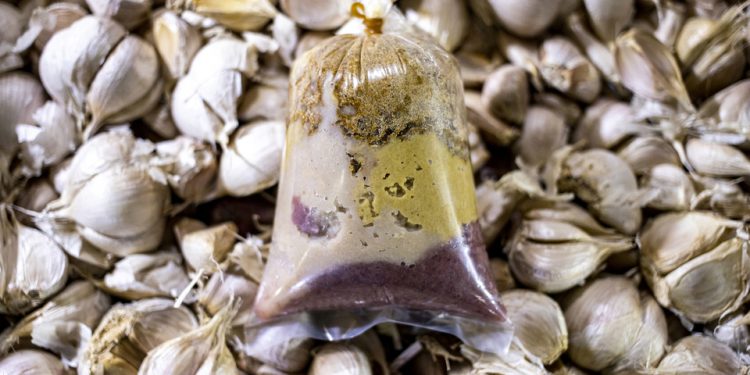Indonesian spices are best known for their strong flavor and fragrance. Lemongrass, galangal, and nutmegs are among the few of Indonesia’s many spices.
In past, traders from Europe and East Asia have sailed across the seas to bring these aromatic seasonings to the kitchens across the globe. Knowledge about essential cooking spices commonly gets passed down through generations.
Like the story of Heri Setiawan, a 51-year-old man that selling blended spices at Tebet traditional market in South Jakarta – Indonesia.
Young Heri did not learn the ins and outs of spices from his parents, but a Minangnese trader at a Mampang traditional market who had taught him the art of spices back in 1988. Every morning, Heri goes to the Tebet traditional market to sell spices — starting from ginger, turmeric, garlic, shallots to chilies.
Spice mixes for specific traditional dishes are also for sale. This includes spices for Soto, the world-famous beef rendang, and chicken-curry with coconut milk or Opor Ayam.
And Heri also blends spices for other recipes from West Sumatra, West Java, Central Java, East Java, Bali, and North Sulawesi.
Heri will blend the spices with a modern grinding machine to create a smooth paste and texture. Each blend can consist of up to 20 spices. Heri’s loyal customers are the owners of Padang restaurants around the capital.
From the simplest dish like Sambal to the complicated, slow-cooked Rendang, herbs are indeed important ingredients to add flavor and aroma to the foods.
Although it seems that Indonesian cooking is very difficult, it’s not really true. In fact, it’s really easy, if you know the types of herbs you are going to use in the cooking, and how to use them.
Below are some of the essential herbs used in Indonesian dishes:
Tamarind
Asam or tamarind is a main herb for Sayur Asam. It is also commonly used to get rid of the fishy aroma in seafood.

Kaffir lime leaves
The leaves have a subtle fragrance that gives a distinctive taste to many lemongrass-based dishes, such as Soto, Rawon, Rendang, and certain types of coconut milk-based dishes. Kaffir lime leaves are used along with lemongrass, bay leaves, and galangal.

Bay leaf
Bay leaf also gives a subtle flavor to dishes. You can find this leaf in traditional markets as well as supermarkets in Indonesia. Bay leaf can be stored for months in a dry and clean place with good air circulation without getting lose some of the flavor and aroma. Used in many Indonesian dishes.

Aromatic ginger
Aromatic ginger or kencur has a smaller size and its skin is slightly darker than ginger. It has a very distinctive aroma compared to other herbs. Used in order to make Sambel Pecel, Sayur Lodeh, Karedok, and Rempeyek (rice flour crackers).

Slaked lime
Slaked lime is a paste obtained by grinding calcium oxide (lime) mixed (or slaked) with water. To use slaked lime in Indonesian dishes, you need to mix one part of slaked lime with two parts of water.
Let it settle for one hour, and use only the clear water part of the mixture for cooking purposes. Usually, slaked lime water is used in order to make food ingredients crispier.

Candlenuts
Candlenuts are used as a thickening agent for sauces of many Indonesian dishes. Used in order to make food ingredients crispier.

Galangal
Galangal has a similar texture to ginger but has a different aroma and color. This is also one of the most commonly used herbs in Indonesian dishes. To obtain a subtle aroma from galangal, people usually crush or slice galangal to be added to dishes.

Finger root (temu kunci)
Temu kunci (finger root, lesser galangal, or Chinese ginger) is a medicinal and culinary herb from China and Southeast Asia. Used in Sayur Bening (spinach soup), Urap (vegetable and coconut dish), and certain types of fish soups.




